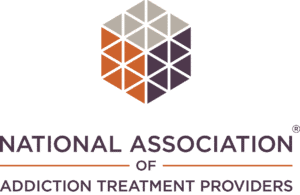Court-Ordered Rehab: What to Expect and How It Works
Going to rehab by court order can feel scary. You might not know what will happen. You may worry about losing control of your life. These feelings are normal. Court-ordered rehab is not a punishment. It is a second chance. A way to get help and start fresh.
This kind of rehab is different from voluntary treatment. The court tells a person to join a drug treatment program, and it happens when drug or alcohol use gets linked to a crime or legal issue.
In this blog, we will break down what court-ordered rehab means. Step by step, we’ll make things clear so you can move forward with more confidence.
What Is Court-Ordered Rehab?
Understanding the Basics of Mandated Treatment
Court-ordered rehab refers to a judge directing an individual to a therapy addiction treatment program. This often occurs when someone violates the law due to substance use, such as drugs or alcohol. Rather than going directly to prison, the court provides an opportunity for assistance. It’s a method to address addiction and avert future offenses.
The court chooses this option to support change, not just punish. The person must agree to follow the rules. These rules include showing up, joining sessions, staying clean, and completing the full program. If the person skips treatment or breaks any rules, they could be sent to jail.
Court-ordered rehab can occur in a treatment facility or via outpatient services. It varies with the situation, but the aim is to assist individuals in healing and improving their lives free from drugs or alcohol.
How Court-Ordered Rehab Differs From Voluntary Programs
Voluntary rehab is a personal choice. People decide to go because they want help. They chose the rehab center. They set the time to begin. If they feel like it’s not working, they can leave.
Court-ordered rehab is different. A judge tells the person to attend. It’s not optional. The court gives the rules, and the person must follow them. If they don’t, there can be serious consequences. This might include fines, more charges, or even jail time.
In voluntary rehab, people often feel more relaxed. They can take things at their own pace. But in court-ordered rehab, things are stricter. The person may need to attend daily sessions, take drug tests, and complete reports. Progress is closely watched by the court.
Still, many people do well in court-ordered rehab. The structure helps them stay on track. In some cases, it becomes a turning point, offering a real chance to change.
Who Qualifies for Court-Ordered Rehab?
Legal Criteria and Common Scenarios
Not everyone qualifies for court-ordered rehab. A judge looks at the full situation before making a decision. The person must show signs of substance abuse, and their crime must also be linked to drugs or alcohol. That connection is key. If drugs played a role in the offense, rehab becomes a possible option.
Common crimes include drug possession, DUI (driving under the influence), theft, or disorderly conduct while intoxicated. First-time offenders often get this chance. However, repeat offenders may also qualify if they show a willingness to change.
Age, criminal history, and mental health can also play a role. Judges often want to see that the person is not a danger to others and that treatment could help. Drug courts are one common path. These courts focus more on recovery than punishment.
The goal of court-ordered rehab is to break the cycle. Jail may be a punishment but rehab tries to heal. People who qualify get the structure and help they need to start over.
How Long Is Court-Ordered Rehab?
Factors That Determine Duration
The length of court-ordered rehab can vary depending on the case. Some people stay for 30 days, while others may need 60, 90, or even 180 days. In some situations, treatment can last a full year.
The judge considers several factors before deciding. They check the type of crime and the person’s history with drugs or alcohol. First-time offenders might get shorter programs, while repeat offenders may be ordered to stay longer.
The level of addiction also matters. If someone has a serious problem, they may need more time. Mental health issues can also lead to longer treatment. In some cases, the rehab center gives updates to the court. If the person is doing well, the judge might reduce the time. On the other hand, if someone struggles or breaks the rules, they could spend more time in the program or even get sent to jail.
Court-ordered rehab isn’t one-size-fits-all. The goal is to give people the time they need to recover and stay clean for good.
What Happens If Someone Refuses Court-Ordered Rehab?
Refusing court-ordered rehab is a serious choice. It’s not like skipping an appointment. A judge gives this order as part of a legal sentence. If someone says no or leaves the program early, they break the law.
This can lead to jail time. In most cases, the court gives rehab instead of prison. So, if the person refuses, they go back to court. The judge may cancel the rehab option and send them to jail instead.
There can also be fines or a longer sentence. Some people lose probation. Others may get new charges for not following the court order.
Refusing treatment also delays recovery. The person misses a real chance to get clean and turn life around. Some judges allow one more chance but that’s not always the case.
Court-ordered rehab is a legal deal. It offers help with structure. Saying no often brings worse consequences. For many, following the order becomes the first step toward real change.
Types of Court-Ordered Rehab Programs Available
There are different kinds of court-ordered rehab programs. The type depends on the person’s needs and the judge’s decision.
Inpatient rehab is one option. Here, the person lives at the treatment center. They get 24/7 care. This is good for people with strong addictions or unsafe home situations as it gives them a break from triggers and helps them focus only on recovery.
Outpatient rehab is another choice. The person lives at home but attends daily or weekly sessions. This works well for people with jobs, families, or milder addiction issues. They still get treatment but keep some normal routines.
Some programs focus on group therapy. Others offer one-on-one counseling. Many include drug tests, mental health support, and life skills training. There are also special rehab programs for teens, veterans, or people with both addiction and mental health issues.
Benefits of Court-Mandated Rehab for Recovery and Accountability
Court-ordered rehab is more than just a legal sentence. It gives people a real chance to change their lives. Here are some key benefits:
| Benefit | Explanation |
| Chance to avoid jail | Many people get treatment instead of prison. |
| Structured Support | Daily rules and schedules keep recovery on track. |
| Legal Oversight | The court watches progress, which keeps people accountable. |
| Access to Treatment | People get the help they might not find on their own. |
| Lower Risk of Repeat Crime | Treating addiction reduces the chance of more legal trouble. |
| Builds Life Skills | Programs often teach coping tools, job skills, and healthy habits |
| Mental Health Help | Many programs treat both addiction and mental health at the same time. |
| Focus on Long-Term Change | Court-ordered rehab pushes people to stay clean and build a better future. |
Legal Help Meets Compassionate Care – Contact Silicon Valley Recovery
Going through court-ordered rehab can feel like a lot. You deal with the legal system, personal struggles, and the pressure to get better. That’s where the right support makes a big difference.
At Silicon Valley Recovery, people don’t just get treatment – they get care that understands both the law and the person. Our team understands how to assist you in navigating the legal processes while supporting your healing. If you or someone you know requires genuine assistance and true support, now is the moment to make contact. Silicon Valley Recovery provides an environment where healing can occur, and you are not required to go through it alone.
FAQs
How long is court-ordered rehab?
It depends on the case. It can last 30, 60, 90 days, or even longer if needed.
Who qualifies for court-ordered rehab?
People with drug- or alcohol-related charges, especially if the court sees treatment as a better option than jail.
What happens if you refuse court-ordered rehab?
You could face jail time, fines, or probation. The court sees it as breaking the law.
Are there different types of court-ordered programs?
Yes. Some are inpatient. Some are outpatient. It depends on what the court and treatment team decide.
What are the benefits of mandated rehab?
It gives people a real chance to get clean, avoid jail, and build a better future with support and structure.









